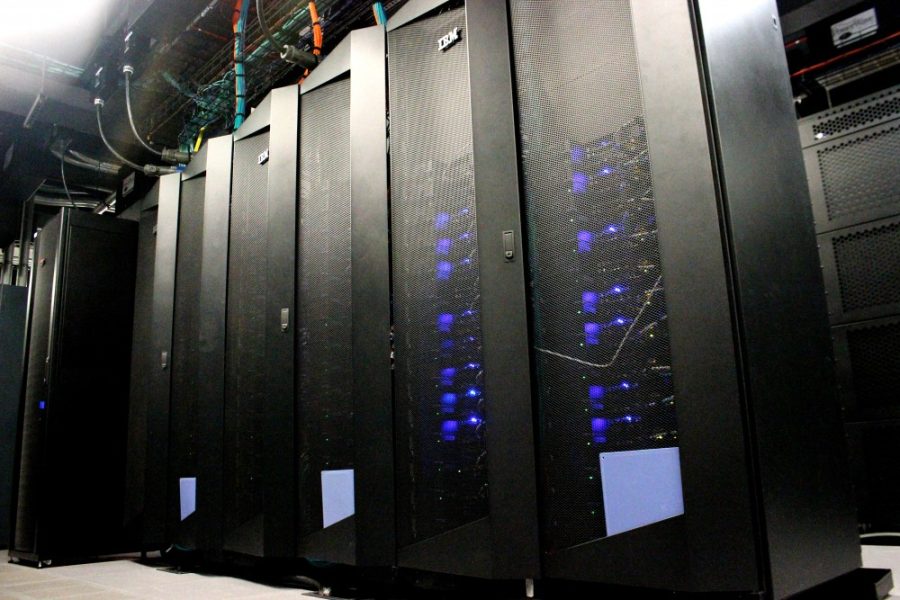The UA now houses one of the world’s fastest computers, a supercomputer known as “El Gato,” which gives UA researchers the power to reach new heights of scientific achievement.
Brant Robertson, an assistant professor of astronomy, along with collaborators from the department of astronomy, the School of Information: Science, Technology and Arts and the University Information Technology Services, obtained a $1.3 million grant from the National Science Foundation to fund the project. The Office of the Senior Vice President for Research provided additional funding, Robertson said.
The Extremely LarGe Advanced TechnOlogy, nicknamed El Gato, was installed December 2013 in the UA Research Data Center.
According to Robertson, El Gato differs from other computers on campus mainly because of its speed, data processing power and efficiency. El Gato is currently the world’s 336th fastest supercomputer. He also stated that the larger system and increased processing power allow researchers to perform more complex computations and run multiple calculations simultaneously.
This level of processing is made possible by the implementation of Graphics Processing Units (GPUs) in addition to Central Processing Units (CPUs). Using a hybrid system of the two types of processing units allows calculations to run almost 1,000 times faster than on a standard desktop, Robertson said.
Such technology is an asset to UA researchers as it allows them to achieve more highly-detailed results. Robertson pointed out that having access to a supercomputer can also help researchers obtain grants to fund their research.
It is rare that a university is able to obtain funding for a supercomputer, Robertson said, and most computers with this kind of power exist in national facilities, making it a great resource for the campus as well as something that sets the UA apart from other research institutions.
Faculty and staff are currently using El Gato to address complex scientific issues ranging from the formation of black holes to pathogens on different types of plant life to DNA sequencing — yet El Gato is available to aid students in their own research as well.
“I want students to know that this resource is there and available to them, and it’s much faster than desktops or laptops,” Robertson said.
Apart from being a great resource for students, El Gato also serves as a resume-building opportunity. Learning how to use a supercomputer helps students build important technical skills. Many industries are using this type of technology, so students who are already familiar with it become more attractive to employers and graduate schools, Robertson said.
Robertson and collaborators want to encourage students to get an account on the system. To do so, students need to fill out a brief form and obtain a faculty sponsor, both of which can be done online, Robertson said.
A symposium will be held on campus in September during which supplier companies IBM, Nvidia and Intel will help train those interested in using the system.









